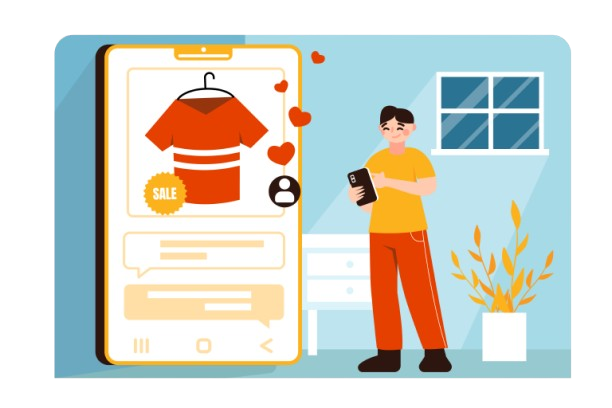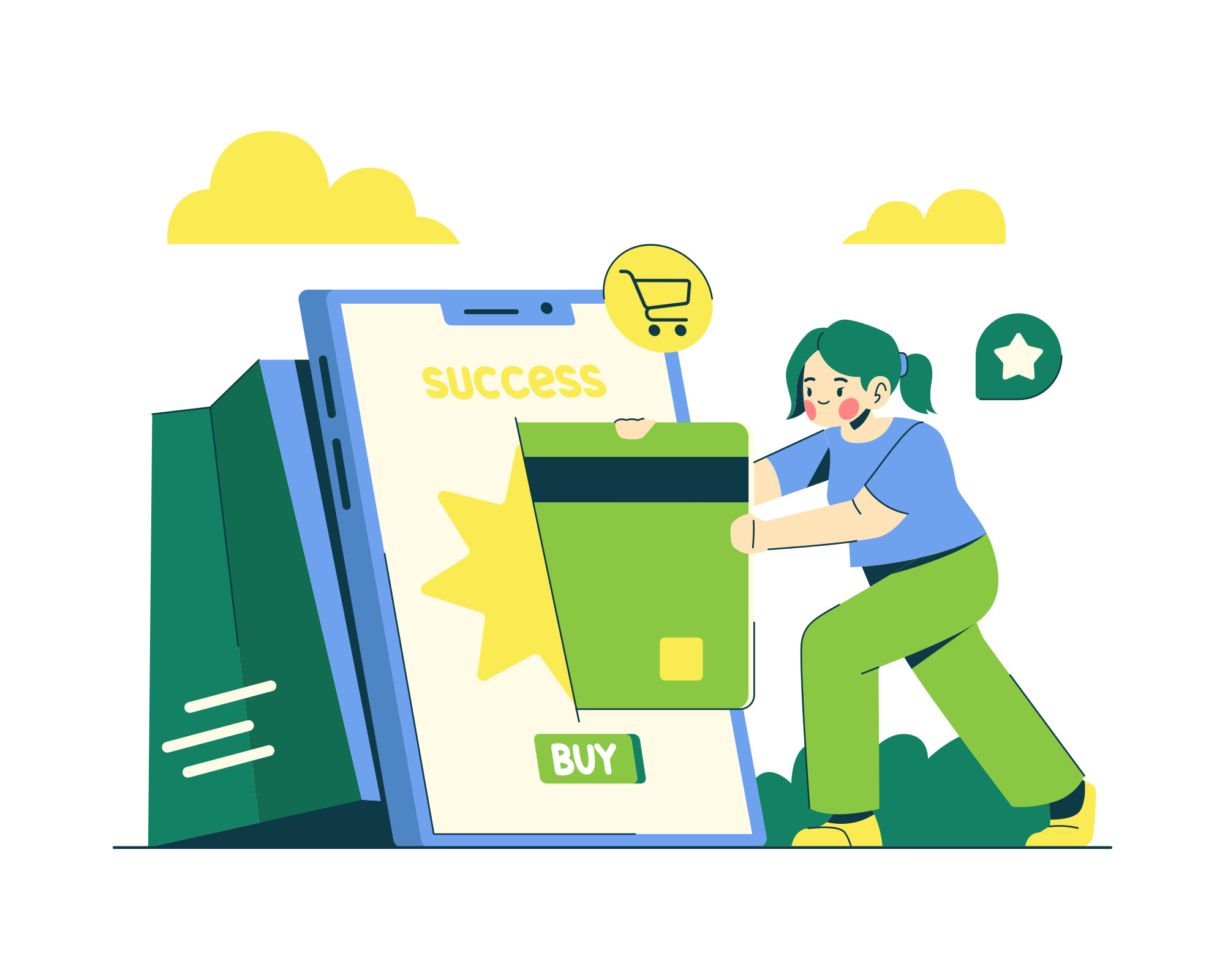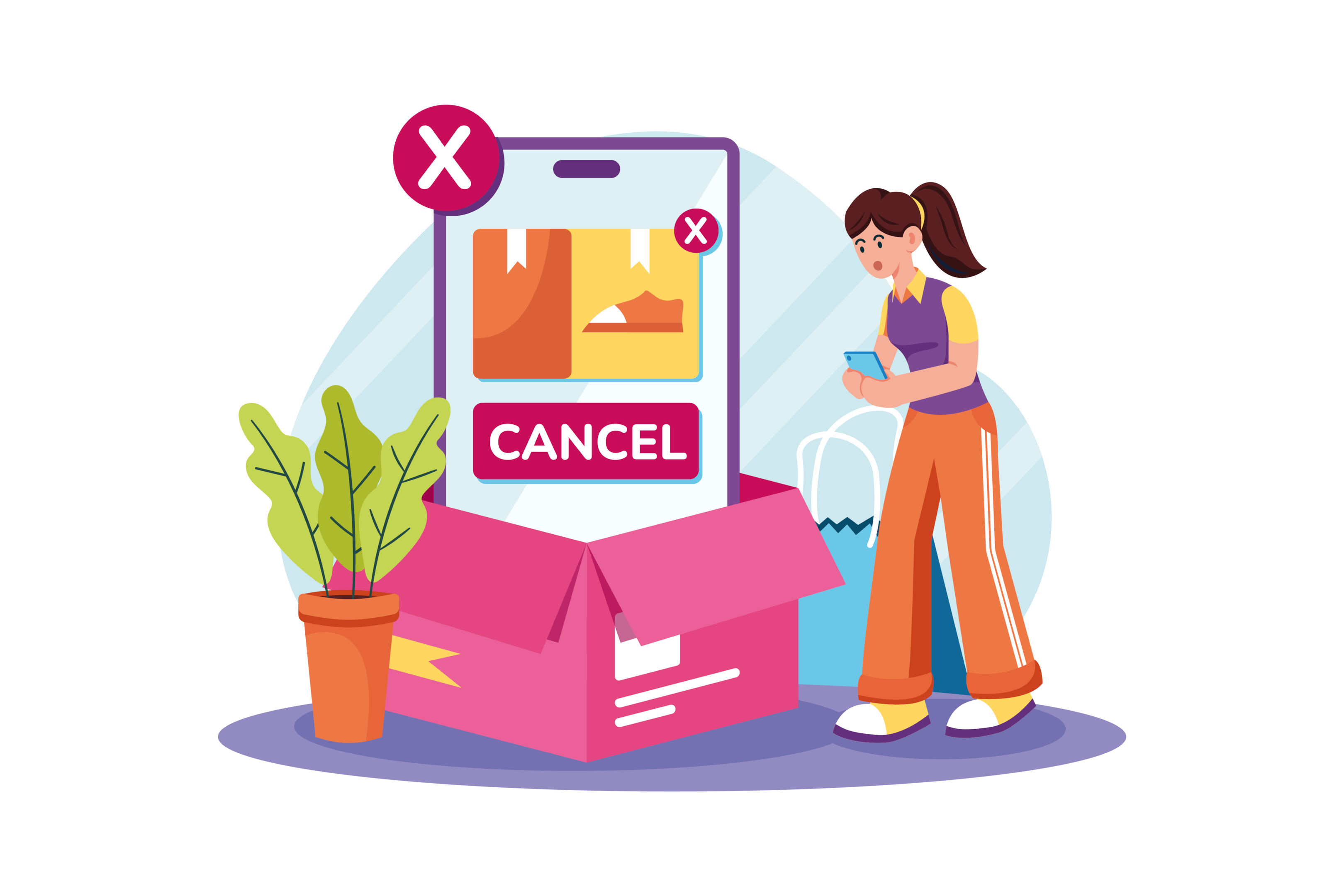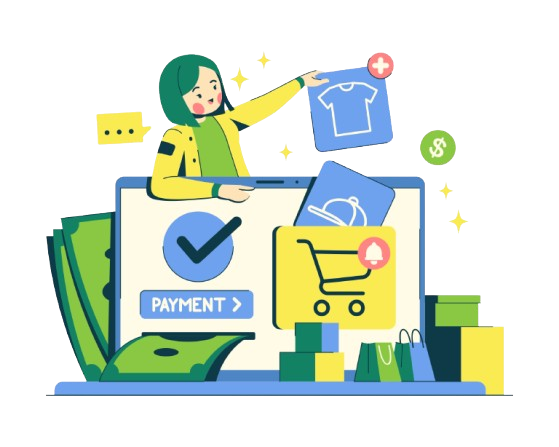2025 is shaping up to be the year of the loyal customer – and nothing builds loyalty like a smart recurring revenue strategy. From curated beauty boxes to “subscribe and save” essentials, the way we shop is changing. In this article, you’ll explore the most effective ecommerce subscription model strategies and learn how to implement them for sustainable growth.
We’ll dive into real-world examples, financial benefits, and proven frameworks that can help you move from one-time purchases to long-term relationships. Whether you’re launching a new product or scaling an existing business, understanding this transformation is key to staying ahead.
Understanding the Ecommerce Subscription Model

At its core, an ecommerce subscription model involves customers paying a subscription fee for products or services, creating a stable and predictable revenue stream for businesses through subscription payments. This model capitalizes on the convenience, hassle-free experience, and value it offers, making it an attractive option for both businesses and consumers. The key to a successful ecommerce subscription lies in its ability to engage customers continuously, providing them with benefits that traditional purchasing methods often lack.
Ecommerce supply chain management is crucial for the seamless operation of these models. Streamlined processes and enhanced customer satisfaction through effective subscription billing management can significantly boost retention rates. For businesses, this means diversified revenue sources and a reliable growth driver through predictable income.
Moreover, ecommerce subscriptions tend to result in higher customer lifetime value. By fostering loyalty and facilitating repeat purchases, businesses can enjoy sustained engagement and long-term profitability. Let’s explore the different types of subscription business models to understand how they cater to various customer needs.
Replenishment Subscriptions
Replenishment subscriptions are designed for essential products that customers need on a regular basis. This model ensures that subscribers receive their necessary supplies automatically, eliminating the need for frequent trips to the store. Common products offered through replenishment subscriptions include:
- Food
- Pet supplies
- Personal care items
- Household goods
Companies like Hello Bello and Once Upon a Farm have successfully implemented replenishment subscriptions, offering baby toiletry goods and cold-pressed fruit pouches, respectively.
A major advantage of replenishment subscriptions is their flexibility. Customers can create their own plans, adjusting delivery frequency and quantity to suit their needs. This flexibility, along with the convenience of automatic deliveries, boosts customer retention.
For instance, Ballsy has effectively retained customers by ensuring they never run out of personal care essentials. The ability to cancel subscriptions anytime further adds to the appeal, providing customers with a risk-free and convenient shopping experience. Efficient stock control is critical here to avoid delays or shortages.
Curation Subscriptions

These focus on delivering personalized product assortments that cater to individual customer preferences. Unlike replenishment subscriptions, which provide essential items, curation subscriptions offer unique and tailored experiences. This model is particularly popular in the apparel and beauty categories, where personalized product collections can make a significant impact on customer satisfaction.
Marketplace SEO plays a vital role in helping curated brands stand out, particularly in competitive verticals like fashion and beauty.
Stitch Fix, for example, has revolutionized the fashion industry with its personalized styling service. By utilizing data analytics and customer feedback, Stitch Fix curates clothing selections that match each subscriber’s tastes and preferences. This level of personalization not only enhances the shopping experience but also fosters customer loyalty.
The excitement of receiving curated subscription boxes with new and personalized items keeps subscribers engaged and eager for their next delivery.
Access Subscriptions
Access subscriptions provide members with exclusive benefits, such as special deals, early access to new products, and premium content. This model is commonly used in various industries, including beauty and food, to offer unique benefits that are not available to non-subscribers. Savage X Fenty, for instance, requires members to spend a minimum amount each month, granting them access to exclusive products and discounts, which is a way in which subscribers pay for added value.
The success of an exclusive-access plan hinges on the continuous addition of value for subscribers. Companies must regularly monitor and tweak their offerings to ensure they remain attractive and relevant to their customers. By doing so, businesses can maintain high engagement levels and foster a loyal subscriber base.
The appeal of access subscriptions lies in the unique experiences and benefits they offer, making them a valuable addition to the ecommerce subscription ecosystem. These exclusive offers often rely on smooth last mile delivery tracking to meet subscriber expectations.
Real-Life Examples of Successful Subscription Businesses

Understanding the potential of ecommerce models is best achieved by examining real-life examples of thriving businesses. Companies like Birchbox and Blue Apron set the standard by offering curated products directly to consumers, building loyal customer bases and steady revenue streams. Streaming services such as Netflix have also leveraged subscriptions to provide continuous access to vast digital content libraries, reshaping the entertainment industry.
These successful subscriber-based brands demonstrate the versatility and effectiveness of the subscription model. By catering to the specific needs and preferences of their customers, most successful subscription businesses and subscription platforms have managed to build strong brands and achieve significant market penetration through subscription sales.
Let’s take a closer look at three standout examples: Dollar Shave Club, Stitch Fix, and Netflix.
- Dollar Shave Club: Disrupted the men’s grooming industry by delivering affordable razors and grooming products on a monthly basis. Their simple, convenient model quickly gained traction and demonstrated the appeal of direct-to-door essentials.
- Stitch Fix: Combines fashion with AI-powered personalization, sending curated clothing boxes tailored to each subscriber’s style and preferences. This approach has helped Stitch Fix scale rapidly and retain customers through hyper-personalization.
- Netflix: Revolutionized home entertainment by offering unlimited streaming for a flat monthly fee. Its vast content library and personalized recommendations continue to keep subscribers engaged and loyal.
SLA ecommerce helps ensure that service standards are upheld across fulfillment partners, which is especially important for maintaining customer satisfaction in high-volume models.
Financial Benefits of the Subscription Business Model

The financial benefits of online subscriptions are significant and multifaceted. Notably, it offers predictable revenue streams, enabling businesses to manage expenses and growth more effectively. Subscriptions provide stable and consistent income, simplifying financial forecasting and inventory management.
Another major benefit is the lower customer acquisition costs associated with recurring revenue setups. Retaining existing customers is often more cost-effective than acquiring new ones, so subscription businesses can capitalize on this by focusing on customer satisfaction and retention.
Additionally, a subscription based business model enhances customer lifetime value by fostering ongoing engagement and repeat purchases. Let’s delve deeper into these financial benefits.
Predictable Revenue Streams
A major advantage of the subscription model is the ability to generate predictable revenue streams. Key benefits include:
- Monthly Recurring Revenue (MRR) provides businesses with a clear understanding of their financial standing.
- This allows for more accurate forecasting and decision-making.
- Predictability is particularly beneficial for inventory management, enabling businesses to anticipate demand.
- Businesses can optimize their stock levels accordingly.
Companies like Dollar Shave Club and Ballsy have demonstrated the effectiveness of this model by ensuring a steady flow of income through recurring revenue stream subscriptions and a recurring fee. The consistent revenue not only supports growth but also provides a buffer against market fluctuations, making the subscription ecommerce business a reliable choice for long-term financial stability.
Lower Customer Acquisition Costs

Retaining existing customers is significantly more cost-effective than acquiring new ones. Studies show that it can be up to five times cheaper to retain a customer than to attract a new one. For subscription businesses, this means that focusing on customer satisfaction and retention can lead to substantial savings in customer acquisition costs.
By keeping customers engaged and satisfied, businesses can reduce churn rates and foster loyalty. This not only enhances profit margins but also ensures a stable customer base.
Simplified pricing models and flexible plans can further improve customer retention, making it easier for subscribers to understand the value they are receiving.
Increased Customer Lifetime Value
Customer Lifetime Value (CLTV) is a critical metric for subscription businesses, representing the total revenue a business can expect from a customer over their lifetime. Repeat customers tend to spend significantly more than new ones, with studies showing they spend 67% more on average. This highlights the importance of nurturing existing relationships and enhancing customer experience.
Successful subscription businesses aim to maximize CLTV by offering ongoing benefits, such as discounts and personalized experiences to boost customer lifetime. Reducing churn rates and increasing customer engagement are essential strategies for achieving higher CLTV.
Health-focused subscription services, for example, benefit from the recurring nature of their products, as consumers prioritize their ongoing health and wellness needs.
Popularity of Ecommerce Subscriptions

Ecommerce subscriptions have skyrocketed in popularity over the past decade, driven by the growing demand for convenience and personalized shopping experiences. Consumers today prefer hassle-free, automated solutions that save time and offer consistent value. This shift in shopping preferences underpins the significant growth of ecommerce subscription businesses, subscription models, online subscriptions, subscription commerce, subscription ecommerce platforms, ecommerce platforms, and the ecommerce subscription platform, as well as the rise of e commerce subscription options and subscription e commerce options.
Various industries, from personal care to fashion and digital content, have successfully adopted such models to meet the evolving needs of their customers. The “subscribe and save” option, which offers discounts and regular deliveries, has become a staple in many households, further fueling the growth of subscription services.
Let’s explore the data and trends that highlight the increasing popularity of ecommerce subscriptions.
Market Growth Statistics
The automated delivery model has experienced rapid growth, with more than 50% of online shoppers from subscribing to an ecommerce subscription box service or using a subscription ecommerce platform. This surge in popularity is evident in the expansion of subscription services across various markets. For instance, a company gained significant attention with a viral marketing video, leading to 12,000 orders within just two days of its launch.
Countries like the United States, the UK, and China are at the forefront of subscription service adoption, showcasing significant cultural and economic influences. European countries are also witnessing rapid growth in subscription services, driven by a cultural shift towards online shopping. The advanced digital commerce infrastructure in these regions plays a crucial role in the widespread adoption of subscription models.
Younger consumers, particularly millennials and Gen Z, show a higher preference for subscription services compared to older generations. This demographic group, aged 18 to 34, is more inclined towards technology and convenience, making them prime candidates for ecommerce subscriptions. Their tech-savvy nature and preference for personalized experiences drive the popularity of subscription models among this age group.
These younger consumers are not just looking for convenience; they also value the personalized and curated experiences that subscription services offer. This trend highlights the importance of catering to the specific needs and preferences of millennials and Gen Z to attract and retain subscribers.
International Comparisons
The subscription ecommerce platform market is experiencing rapid global growth, with significant increases in overall revenue across different regions. Countries with higher disposable incomes, such as the United States and the UK, tend to have higher adoption rates of subscription models.
Demographic studies reveal that younger consumers are more inclined to use subscription services than older generations, a trend that holds true across various countries. The interaction between economic factors and demographic trends shapes the varying success rates of subscription models across different regions.
Tip: Businesses looking to expand internationally might also want to consider German market entry strategies, especially when aiming to tap into Europe’s growing subscription economy. Understanding these international comparisons can help businesses tailor their subscription strategies to different markets.
Implementing a Subscription Model

Adding a subscription model to your ecommerce business isn’t just about recurring revenue — it’s about meeting real customer needs in a smarter, scalable way. Key considerations include:
- Businesses that offer physical products with recurring needs, such as consumables and essentials, are ideal candidates for this business structure.
- Evaluating market feasibility can help validate your ecommerce subscription business.
- Conducting pilot programs before full commitment is recommended.
A successful ecommerce subscription business should focus on data-driven strategies to better understand customer preferences and deliver value consistently. Clear communication of the value exchange is vital, as many subscribers prioritize perceived value in their decision to sign up.
Let’s break down the steps to implement a successful recurring services strategy.
Step 1: Evaluate Your Product and Audience
Start by asking the right questions:
- Do your customers value convenience and predictability?
- Do you sell products that customers use regularly? (e.g. supplements, pet food, cosmetics, coffee)
- Is your target audience comfortable with recurring payments?
If yes — your business is a good fit for subscriptions.
Best product types for subscriptions:
- Consumables (vitamins, skincare, groceries)
- Pet supplies (food, grooming)
- Hobby items (craft kits, art materials)
- Exclusive content (digital products, learning tools)
Step 2: Choose the Right Subscription Type
Not all subscriptions work the same. Pick the model that fits your business and audience best:
- Replenishment: Regular delivery of the same product (e.g. razors, protein powder)
- Curation: A surprise selection based on customer preferences (e.g. beauty boxes, kids’ toys)
- Access: Members-only benefits like discounts, early access, or exclusive content

Step 3: Build a Strong Value Proposition
Ask yourself:
- Why would someone subscribe instead of just ordering once?
- What problem are you solving?
- What added value do subscribers get?
Examples of strong value:
- Lower cost than one-time purchases
- Time-saving and convenience
- Exclusive items or early access others can’t get
Step 4: Set Up Logistics and Tech
Behind every great subscription offer is a seamless backend.
- Warehouse & ecommerce fulfillment: Automate recurring order prep and packing. Consider a 3PL partner like WAPI (especially if you’re selling across Europe).
- Payments: Use billing tools like Stripe, Paddle, or Tinkoff Subscriptions for smooth recurring charges.
- Cancellations: Make unsubscribing easy — difficult cancellations increase churn and frustration.
Step 5: Test Your Idea with an MVP
Don’t overbuild — start lean.
- Launch with 1–2 products and 1–3 month plan options
- Build a basic landing page with clear messaging
- Use your existing customer base or small ad campaigns to validate demand
- Gather real feedback on pricing, delivery, ease of use, and reasons for cancellation
Step 6: Focus on Retention and Communication
Once people subscribe — keep them engaged:
- Onboarding: Explain how the subscription works and highlight benefits
- Reminders & updates: Use SMS/email for shipping notices and upsells
- Win-back campaigns: Re-engage unsubscribers with special offers
- Loyalty rewards: Offer discounts or bonuses for long-term customers
Step 7: Track the Right Metrics
Your growth depends on data. Monitor:
- MRR (Monthly Recurring Revenue)
- Churn Rate (subscriber loss over time)
- LTV (how much each customer is worth)
- CAC (how much it costs to acquire a subscriber)
These KPIs help you understand performance, forecast growth, and optimize your funnel.
Step 8: Scale What Works
When your subscription model starts gaining traction:
- Add tiers (e.g. premium, trial, gift subscriptions)
- Offer customization (frequency, product combinations)
- Expand into new categories or international markets
Types of Businesses Suited for Subscriptions
Various businesses, especially those targeting urban consumers with busy lifestyles, benefit from subscriptions as they offer convenience and essentials. Business models like the subscription based model provide businesses with the advantage of turning customers into loyal followers and building reliable recurring revenue streams. Additionally, subscription business models provide a framework for sustained growth, particularly in a subscription based business model.
Businesses in saturated markets utilize subscription-based models for differentiation, enabling them to stand out and attract more customers. Examples include companies offering consumables, entertainment and media, and health and wellness products. Let’s explore these categories in more detail.
Consumables and Essentials

Consumables such as food, toiletries, and pet supplies are ideal products for subscription services. Businesses selling these items thrive due to the convenience and loyalty they offer customers. For example, Dollar Shave Club disrupted the grooming market by providing low-cost razors delivered directly to customers’ doors.
Subscribers to curation services are often willing to pay a premium for high-quality personalized recommendations. Common consumables included in subscription services often encompass:
- makeup
- fragrances
- meals
- snacks
These subscriptions provide customers with a steady supply of their favorite subscription products, enhancing customer satisfaction and keeping customers satisfied. This is often done through an ecommerce subscription platform. As a subscription provider, we ensure that our offerings meet the needs of our clients.
Entertainment and Media
Media companies, such as streaming services and digital content providers, have increasingly adopted ecommerce subscription service models to generate revenue. Subscriptions create a steady revenue stream while providing customers with convenient access to their favorite content and services.
Businesses that provide ongoing services or products on online stores or platforms, such as software, streaming, and personal care, can benefit significantly from this business model. The continuous engagement and value offered by these services keep customers coming back, ensuring long-term profitability and growth.
Health and Wellness
Health-focused subscription models include replenishment subscriptions, which provide customers with regular supplies of health products in a subscription box. Vital Proteins, for example, specializes in collagen products and operates in the health and wellness category, illustrating the success of health-centric subscriptions.
The health and wellness segment is experiencing significant growth due to increasing consumer focus on health-related products. The demand for fitness apps, supplements, and wellness boxes presents vast opportunities for businesses aiming to tap into the health-conscious market.
Common Mistakes in Subscription Businesses
While subscriptions offer numerous benefits, they also come with potential pitfalls. High customer churn is a significant challenge that subscription businesses face. Involuntary churn often results from payment issues that businesses must address. For instance, an answer to the question of why ecommerce businesses fail is often tied to poor customer experience and weak operational infrastructure, which subscription businesses must actively address to succeed.
Investing in customer relationships instead of viewing them as transactional enhances long-term retention and brand loyalty. It is crucial to check in with customers about their satisfaction and potential process improvements after launching a subscription service. Let’s explore some common mistakes and how to avoid them.

Ignoring Customer Feedback
Many businesses fall into the trap of focusing solely on sales metrics and overlooking what subscribers are actually saying. Ignoring feedback can result in misaligned product offerings, frustration, and churn. To build a thriving subscription base, it’s essential to actively solicit input through surveys, reviews, and support interactions – and more importantly, act on it. When customers feel heard, they’re more likely to stick around.
Overcomplicating Pricing Structures
Subscription services with too many tiers, hidden fees, or confusing terms can scare off potential customers. Shoppers want clarity and control over their spending. Simplifying pricing and offering flexible plans (e.g. monthly, quarterly, or customizable bundles) makes your service more approachable. The right subscription management software can also help automate this process, reducing friction at checkout and boosting conversions.
Neglecting Marketing Efforts
Unlike one-time purchases, subscription businesses require sustained marketing to keep the pipeline flowing. Without regular campaigns, referral programs, or re-engagement strategies, customer acquisition and retention will stall. This is especially true in competitive categories like beauty, food, or curated boxes. A consistent marketing strategy keeps your brand top of mind, builds community, and reinforces the value of staying subscribed.
Failing to Address Payment Issues (Involuntary Churn)
One of the sneakiest threats to your revenue is involuntary churn – when subscribers leave not by choice, but because of failed payments. Expired credit cards, declined transactions, or outdated billing info can quietly eat into your subscriber base. Combat this with dunning emails, automated payment retries, and clear communication. Many subscription platforms offer built-in tools to reduce failed payments and keep your revenue stream steady.
Treating Subscriptions as One-Time Sales
Subscription ecommerce platforms thrive on long-term engagement, not quick wins. Businesses that treat subscribers like one-off buyers miss the chance to build loyalty and community. Successful ecommerce subscription services prioritize retention from day one – through onboarding emails, member-only perks, personalized recommendations, and excellent support. The goal is to turn your subscribers into brand advocates, not just customers.
Best Practices for Subscription Management
Effective subscription management is crucial for maintaining customer satisfaction and reducing churn. Frequent communication with customers helps businesses understand their interests and needs, fostering closer relationships. Poor communication with subscribers can lead to increased churn.
Subscription management software plays a crucial role in streamlining operations and enhancing customer experiences. Best practices include listening to customer feedback, simplifying pricing structures, and maintaining marketing efforts related to subscription ecommerce platforms. Let’s explore some of these best practices in more detail.
Using Subscription Management Software
Key features of subscription management tools include:
- AI stock management
- Automated quote management
- Customer database management
- Recurring payments
- Tiered plans
A high degree of automation and seamless integration with existing tech stacks are essential for subscription software.
Look for subscription management tools that offer 24/7 customer support and different pricing structures, such as free tiers or monthly subscriptions. To enhance customer loyalty, these tools can implement personalization strategies and provide multiple purchase options.
Offering Flexible Plans

Flexibility in subscription plans can cater to various customer preferences and improve overall satisfaction. Offering flexible plans allows businesses to cater to a wider range of customer preferences and budgets, fostering greater engagement.
Simplified pricing models help enhance customer understanding, improving their overall experience and trust in the brand. Implementing subscription software enables businesses to streamline their pricing strategies, enhancing both efficiency and clarity.
Enhancing Customer Engagement
Personalized communication and exclusive perks are essential for maintaining subscriber engagement and satisfaction. Businesses can gather valuable feedback from customers by proactively reaching out to access customers and setting up calls.
Pretty Litter has learned from its top customers. They achieved this by creating a VIP hero group on Facebook. Curation subscriptions enhance customer experience by providing new and exciting experiences. The appeal of curation subscriptions lies in the element of surprise and discovery with each delivery.
Conclusion
Overall, ecommerce models offer a compelling avenue for growth and customer engagement in 2025. By understanding the different types of subscription models, learning from successful businesses, and implementing best practices, businesses can tap into the thriving subscription economy. The financial benefits, coupled with the increasing popularity of subscription services, make it a viable and attractive option for businesses across various industries. Embrace the power of subscriptions and create a loyal customer base that drives consistent revenue and long-term success.
Frequently Asked Questions
Below are a few of the most common questions asked about the topic of subscription business model.
How does a subscription model provide financial stability for businesses?
A subscription model ensures financial stability by providing predictable revenue streams, which reduce uncertainty and allow businesses to plan effectively. Additionally, it typically results in lower CAC and enhances CLTV, further solidifying financial health.
What are common mistakes to avoid in subscription businesses?
To succeed in a subscription business, avoid ignoring customer feedback, overcomplicating pricing structures, and neglecting ongoing marketing efforts. Addressing these areas can significantly enhance customer satisfaction and retention, as well as impact subscription sales.
How can businesses ensure successful implementation of a subscription business model?
To ensure successful implementation of a subscription model, businesses must identify a suitable niche, develop a comprehensive business plan, and create an effective launch strategy. This focused approach lays the groundwork for a sustainable subscription service.
What types of businesses are best suited for subscription?
Subscription models are particularly effective for businesses that provide consumables, entertainment, media, and health and wellness products. These industries benefit from the recurring revenue and customer loyalty that subscriptions create.



 Community
Community
